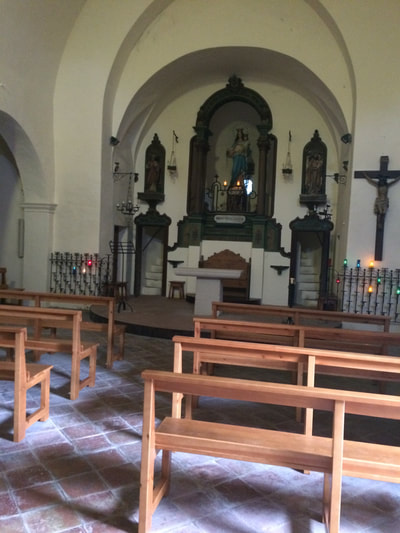 As I sit at a cafe writing this blog post, I listen to groups of women around me talking. At 10:00, women come together to smoke, drink coffee, and talk about their lives. This is the best time to subtly practice language comprehension. Their gestures are animated and their words are fast and loud, often overlapping each other. As I strain to comprehend the conversations around me, it is a stark reminder of how difficult it actually is to speak and understand another language. Up until coming to Spain, I've been learning Spanish through the popular online language program, Duolingo. As of now, it says I am 50% fluent in Spanish, but it is one thing to be able to speak online as opposed to speaking with real people. They do not say their words one at a time, or even follow the rules that the program teaches. Plus, in Spain there are so many different colloquialisms and pronunciations that nothing sounds the same. When you factor in that most people also speak Valencian, which is very similar to Spanish, you can never be sure of what you are hearing. My son, who has been taking Spanish at school for five years, basically feels he is starting from scratch. My kids have a steep learning curve because all of the kids slip into Spanish, and Spanish slang, whenever they aren't in class. So to have friends they have to start picking it up fast.
My husband and I just started Spanish classes in Puzol with a Valencian woman who offers small group classes. We are in class with three people from Poland and two from Holland. It is humbling to realize that they are learning at least their second language, and in some cases their third. Much of the class is taken up with analyzing the differences between cultures and words, which is fascinating. We have a lot to learn compared to the other Europeans because they are already accustomed to coffee rituals, purchasing sausages and ham, and traveling between countries. One of the most useful things about the class so far has been getting answers to questions about words and phrases that people say regularly. One of the girls at school told Celia she was a "mono," which means monkey in Spanish. It turns out that people in Spain use the word "mono" to mean "very cute." They call babies monos, and things they like monos. So, Celia was relieved to know that she was getting a compliment, not an insult. We also now know that people in Spain shorten "Hasta Luego" to "Lugo." This now explains what many people say to us in passing. The most widely used word in Spain is definitely "vale." Up until we got here we hadn't even heard it, because it is used in Spain, not Central America. You can't find it on Google Translate (our life raft in Spain). It basically means, "OK," or "got it," but people tend to use it in every sentence. Between "vale" and "que" you can usually respond to whatever people say. It has therefore become obvious that memorization and grammar are only half of learning Spanish. The larger task is understanding how words are actually used. Even though it seems daunting to become bilingual, and I am frustrated each day by my lack of integration because of my shortcomings, I have to remind myself that it is coming along. As I listen to the women beside me, or the radio station, or commentary during soccer games, I realize that I can now pick out most of the words. It doesn't just come across as random sounds. If I memorize what someone has just said, I can also translate it later at a very slow pace. My brain just can't keep up with the speed of talking. The members of my class on their third plus language say that you realize you know a language when you no longer have to translate it in your head. Speaking is another embarrassment. I am usually proud when I put a sentence together with actual verbs and nouns, not just one word and pointing. But, the better I get at speaking the more people think I can actually understand it, too. I guess it is an accomplishment when people respond to something I say. This means that I pronounced the words well enough for someone to understand me. But, it comes with the down side that they actually respond to me in Spanish, at which point I have a blank stare on my face. It is then that I usually respond with "vale," or "Que?" the failsafe Spanish responses.
2 Comments
Amie
9/28/2017 01:15:12 pm
Well written! I too am learning Spanish while living in country. Your writing captured my feelings exactly. :)
Reply
Charlotte Guest
10/17/2017 05:53:11 am
Hi Sally.
Reply
Leave a Reply. |
AuthorSally and her family moved to Spain for a year from July 2017 - July 2018. They lived in a little town called Puzol, which is about 20km north of Valencia. Her kids, Carson and Celia, attended the American School of Valencia, an International School located in Puzol. The goal for the whole family was to experience another way of life, and learn Spanish. Archives
May 2018
topics |
contact
|





